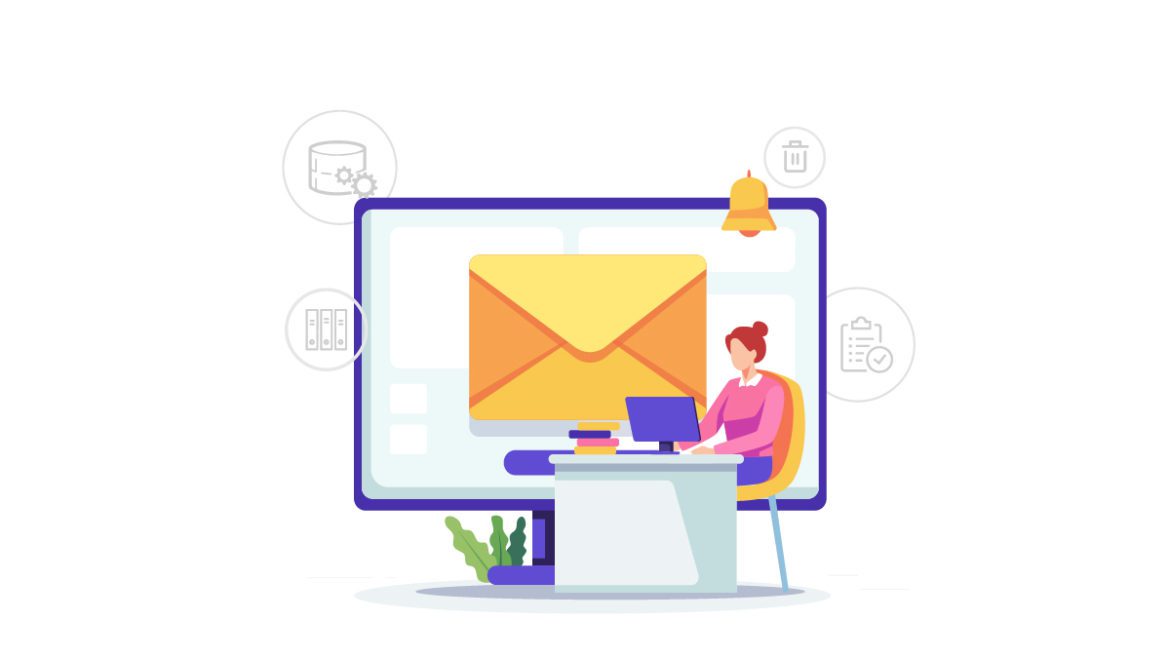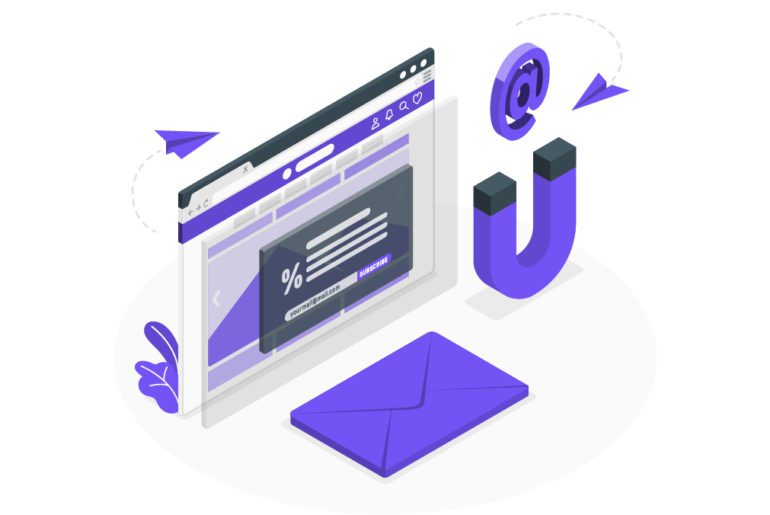Emails are the primary means of communication in the corporate world. Everything we do and discuss was once an email. Hence it is no surprise that in the year 2020, we exchanged over 30 billion emails globally. A number this big comes with its set of problems. Issues of email overload and a digital detox are now cropping up which can only be solved with email management. But the question arises: How to manage email without wasting further time on them?
Statistics for email management

Here are some statistics related to emails and email management which compel us to know how to manage emails on a daily basis:
- It has been studied that 35% of business professionals check email on a mobile device instead of a personal computer for easy accessibility.
- On average, professionals have more than 200 emails in their inboxes and receive 120 new ones each day but respond to only 25% of them.
- On average, professionals check their email 15 times per day or every 37 minutes. This leads us to check email six times more than needed.
- Full inboxes waste 27 minutes per day.
- Letting notifications interrupt us, and taking time to get back on track, we lose 21 minutes per day.
How to manage emails with 5 effective tips

Managing emails is a matter of consistent efforts and using the right email management tips for you. Here are a handful of effective tips to help you understand how to manage email.
1. Use software and extensions
The higher the number of emails you receive, the lesser time do you have for email management. Hence while email management tips can help, it is easier to let email management softwares handle your overflowing inboxes. Various email management software for different purposes are now available. These form a prime foundation for your email management strategy. Tools like Mailmanhq, EmailAnalytics, Gmelius, etc are highly recommended for better email management.
Email management software functions independently as an app different from your email software. Email extensions, on the other hand, work right within your email software. Extensions like Boomerang, Simple Gmail notes, FlowCrypt Gmail Extension have been touted useful to know how to manage email.
2. Use folders and filters to sort your emails
The reason why email overload is a real thing is that we just send and receive so many emails on a daily basis. Handling a huge amount of emails not only takes time but also patience. Email software like Gmail allows you to set filters to sort through the bunch of incoming emails. These filters could be used to divide emails according to a sender, or a subject line, or urgency. These filters point to separate folders. Thus all incoming emails are sorted into these folders.
This email management strategy helps you sort your way through the barrage of emails one faces. It makes it easier to reply to essential emails, knowing the emails are sorted out appropriately once you use filters to know how to manage email.
3. Delete without delay to how to manage email
The one way to REALLY know how to manage email is to just deal with them. Any action that an email requires should be done promptly so the email can be deleted. Each email can either be dealt with immediately or sometime later. Both of these scenarios depend on how long the task in the email might take. If it’s a task you can get through in a minute, do it and delete the email for better email management. A task that would take longer, can be scheduled for later without dwelling on it. Whichever you choose, you can get back to your task at hand at the earliest.
Deletion might seem extreme to the ones who might need an email for a future reference. Archiving emails comes to the rescue here. Archived emails take lesser space too, contributing to better email management. Lighter inboxes mean no more too many emails.
4. Unsubscribe
More often than not, our inboxes are filled with fluff that we can delete with no further ado. This fluff mainly contains newsletters or product alerts spam, etc that aren’t productive at all. In these cases, unsubscribing from these sites is the best way out. Gmail extensions like HelpNinja, Gmail Unsubscriber, Unroll.Me can handle that and help you to know how to manage email.
But what if you need some of these subscriptions? Well, in that case, you could make an email id separate from your work or professional email. Thus your work email inbox stays away from email clutter and heads to inbox zero, and you do not miss out on your beloved newsletters.
5. Make a to-do list
The emails that are worth our attention, are our work emails. These often contain tasks for us to complete or projects to take care of. Converting them into tasks is hence the most strategic thing to do. Firstly, this reduces the number of emails you end up with. Secondly, all your emails will take seconds to comprehend. This not only saves time but also increases your productivity level.
Email management software like ToDoist and Trello function mainly as project management tools that also help you know how to manage email. They help convert emails into tasks assigned to you, equipped with reminders and collaborative tools. Completing these tasks close the task label while also leading your inbox to zero.
Gain a better work life balance by knowing how to manage email
While too many emails come with their set of problems, email management comes with a set of advantages. Better productivity, better time management and better efficiency are some of the many benefits of knowing how to manage email. All these benefits lead to us living a better and more enriched life.
FAQs
1. Use email management softwares like Mailman.
2. Respond to emails promptly using the 2 minute rule.
3. Delete the emails after you deal with them.
4. Delegate emails if they suit someone else’s responsibilities better.
5. Organize your emails with folders, filters and labels.
1. Delete spam folder.
2. Organize emails into filters and folders.
3. Use labels and stars to mark emails as important.
4. Delete old, irrelevant emails.
5. Archive any emails that you have processed but cannot delete.
1. Use filters and folders to organize emails.
2. Star or flag important emails to differentiate them.
3. Convert emails to to-do lists to get through them easily.
4. Snooze emails that need more work to get done.
1. Open Gmail.
2. At the top right, click Settings. See all settings.
3. Click the Labels tab.
4. Scroll to the Labels section and click Create new label.
5. Enter the label name and click Create.


![10 Best Email Organizer Apps [Tried & Tested] email organizer app](https://library.mailmanhq.com/wp-content/uploads/2021/05/The-3-Best-email-Organizer-app-For-C-level-Executives-770x515.jpg)

